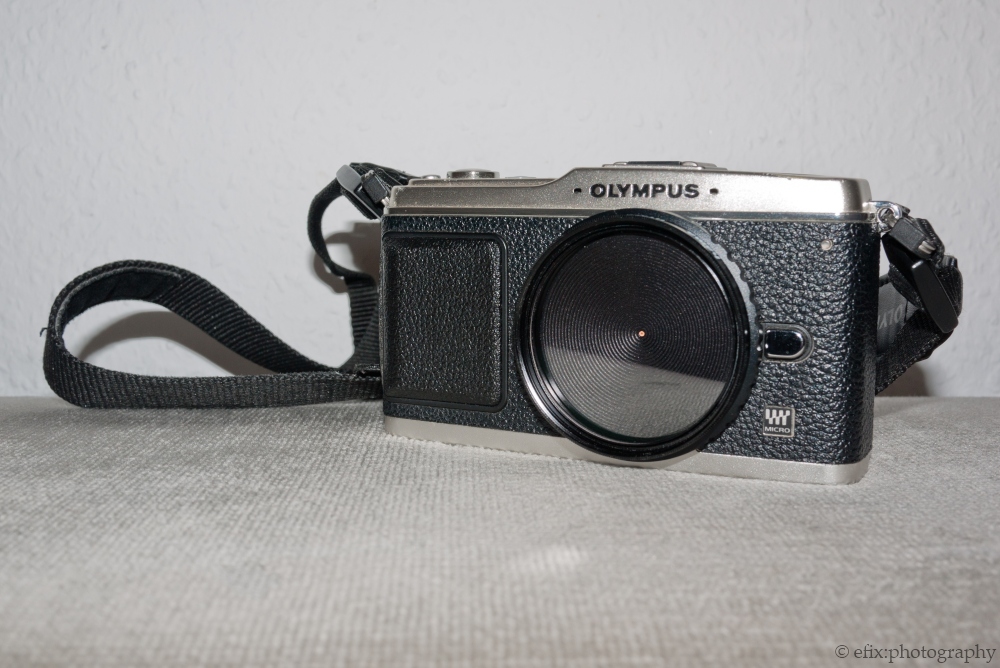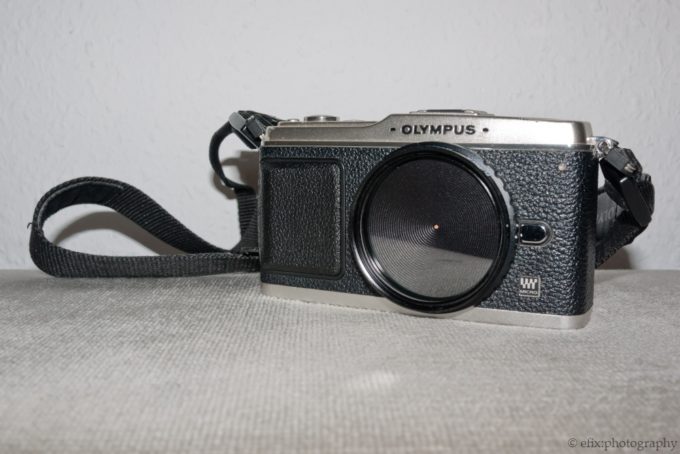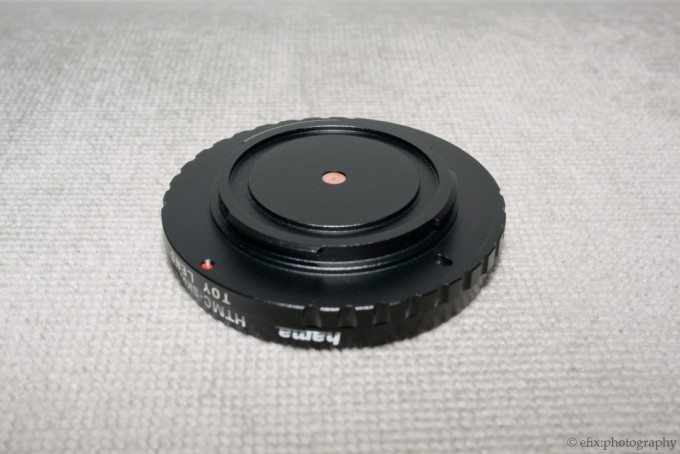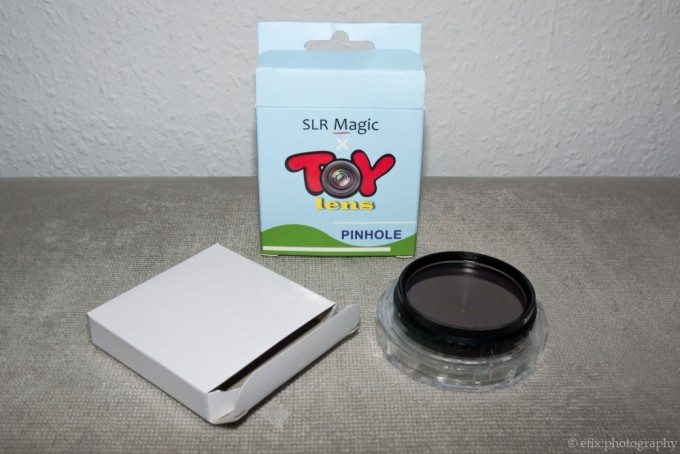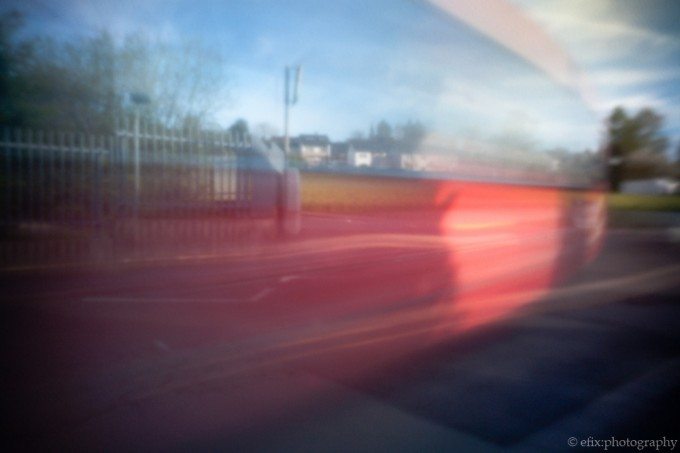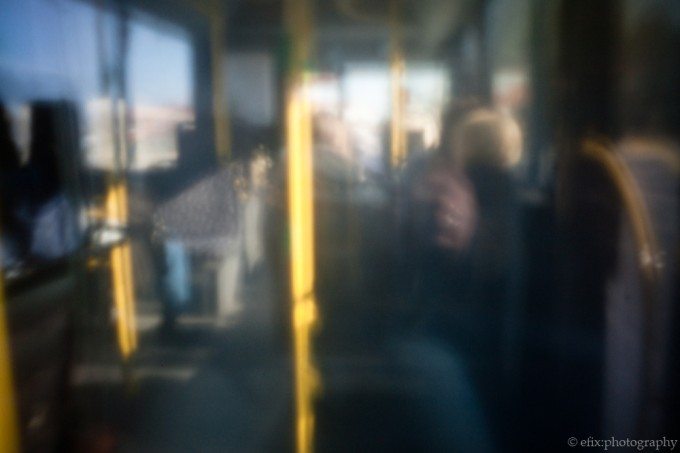Last Updated on 04/28/2012 by Chris Gampat
SLR Magic just recently expanded their portfolio of cheap-and-cheerful “toy lenses” that are inexpensive, fun to use and will deliver “artistic” results. With their Pinhole Toy Lens for Micro Four Thirds, they have introduced a slightly different pinhole adapter than what you usually get. It provides a wide-angle field-of-view comparable to that of a 24mm lens on full-frame, and its “optics” are the same as with any pinhole “lens”: simply a very, very tiny hole drilled into a sheet of metal. What sets this one apart from most other pinhole adapters, though, is that it comes with a protective covering in the front. This way, there is less chance that tiny dust particles or moisture can penetrate the camera and end up on your sensor. The disadvantage, however, is that it is more prone to flare.
To see how the SLR Magic x Toy Lens Pinhole for Micro Four Thirds fares in actual, real-world use, read on after the jump.
The SLR Magic Pinhole Lens is available on eBay (directly linked sentence).
SLR Magic x Toy Lens Pinhole for Micro Four Thirds Specs
| Camera Mount | Micro Four Thirds |
| Focal Length | 12mm (24mm-equivalent) |
| Angle of view (diagonal) | 84° |
| Aperture | f/128 |
| Filter thread | 52mm |
| Construction | Solid all-metal body, metal sheet insert with laser-drilled pinhole, protective covering |
| Price | US-$ 49.99 |
The adapter is made from solid metal, and seems to be just one single piece. That’s good, since there are no moving parts that could get loose, or glued together bits that could come apart. The actual pinhole is laser-drilled into a thin sheet of metal — brass from the looks of it — that sits tightly in the center of the adapter. The whole front is covered with a huge piece of a transparent material that does not seem to be glass, but rather acrylic. And here’s the best part: the adapter even comes with a 52mm filter thread! This way, you can mount all sorts of filters like polarizers, ND filters (to let even less light pass), color filters for b&w photography or just a plain-and-simple UV filter to further protect the protective covering. (As you can see in the picture above, that’s what I did.)
What’s in the Box?
The SLR Magix x Toy Lens Pinhole for Micro Four Thirds comes in a small, colorfully decorated cardboard box that states the name of the manufacturer and product. It contains another small cardboard box, which in turn contains a transparent plastic container that holds the lens. This round, transparent plastic container is very solid and looks like it is meant to safely store away the pinhole adapter for transport.
Using the SLR Magic x Toy Lens Pinhole on the Olympus E-P1
I’ve never used a pinhole adapter before, so this was a new experience for me. So when I received the lens from SLR Magic, I instantly attached it to my Olympus E-P1 and went out shooting. Mounting it to the camera is like with any other lens, only that it is much slimmer and more easily slips from your grip. As with all Micro Four Thirds lenses, you hear a distinct “click” when it’s mounted correctly. When you want to take it off again, just hold down the lens release button and twist it counter-clockwise — again like with any other Micro Four Thirds lens.

And as with any other pinhole adapter, this one, too, provides that typical pinhole look with strong colors, contrast and vignetting. With an aperture of f/128 and no glass elements, don’t expect great “optical” performance — there are no optics involved. Light enters through the entrance pupil and falls onto the sensor. That’s it.
What you get is a strongly blurred image with only very few detail, but with a very distinct look to it that you may either like or not. (On the bright side, due to the lack of any optics, there is zero distortion!) I, for my part, have quickly grown to like this lo-fi look, since it reduces the image to the very basics: light and shadow, composition and shapes. Also, due to the super small aperture, taking pictures with the (or a, in general) pinhole adapter requires much longer exposure times than even the slowest of regular lenses. You will rarely take a picture in less than one second, and if light gets sparse, be prepared to expose for minutes.
Having had no previous experience with pinhole adapters, I simply shot away at stuff that caught my eye — pretty much my standard approach to photography. I figured very quickly that with its 24mm-equivalent field-of-view, the SLR Magic x Toy Lens Pinhole was ideally suited for architectural photography, but also for any kind of scene that needed a wider viewing angle in general, like in the picture below.

When I had enough of taking wide-angle pictures, I decided to make creative use of the fact that with its f/128 aperture, the adapter forces you to make long exposures and use a tripod. For the picture below, I had the camera set up at the corner of a street, and waited until a bus would come around the corner. When I saw it approaching, I hit the shutter button. I had the self-timer set to two seconds in order to eliminate shake from pressing the shutter button, and when it fired, the bus was just at the corner. The exposure time was long enough for the bus to pass by and out of the frame again, and the result was the picture below.
The next picture was actually taken inside a bus, during my commute to work, hand-held. You’d think that you would see a lot of extra blur due to the shaking of the camera, but I found that shooting a picture from the hand or from a tripod wouldn’t make that much of a difference, provided you can hold the camera still enough in your hand. The blur is already so massive that adding a little shake doesn’t really matter that much. In the case of the picture below, however, the movement from the bus was so heavy that holding the camera still was simply impossible. The outcome was a picture that consists more of blurred shapes and colors than anything. As I stated earlier, however, I actually like this “artistic” look.
As mentioned earlier, with its protective covering, the SLR Magic x Toy Lens Pinhole is more prone to flare than regular pinhole adapters. The picture below exaggerates this fact greatly, but this is what you will get with a strong light source like the sun just outside the frame. Notice that the kind of flare you’ll get from this pinhole adapter is nothing like the flare you get from a lens with actual optics.
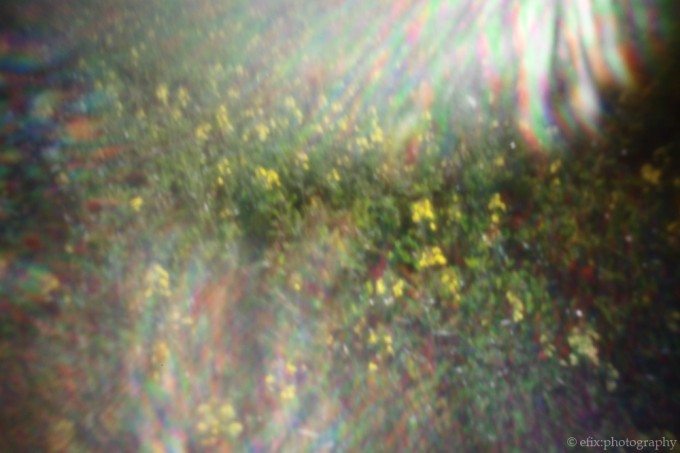
During my time with the SLR Magic pinhole adapter, I actually grew quite fond of the 24mm-equivalent focal length, which I had not used before. The widest lens in my setup is the Voigtländer Super Wide-Heliar 15mm f/4.5, which yields a 20mm-equivalent angle-of-view on the Leica M8. It’s a lens of great quality, but for me, it often is too wide. The SLR Magic pinhole, however, just felt right. I often feel that 28mm isn’t wide enough if you want to go really wide, and judging from my experience with the Heliar, 21mm is too wide (for my taste, that is). However, since a pinhole adapter is no replacement for a real lens, you can bet on what my next lens purchase will be…
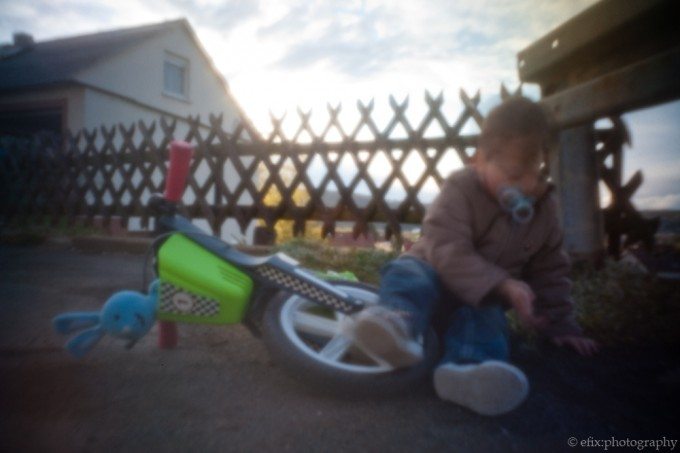
Conclusion
The SLR Magic x Toy Lens Pinhole for Micro Four Thirds is a cheap-and-cheerful pinhole adapter that does everything right. It’s solid, it has a great focal length that is very versatile and quickly adds a lot of drama to your pictures, and with its protective covering there’s no chance of dust or moisture getting onto your sensor or in your camera. And at a retail price of merely fifty bucks, there’s really no excuse not to try out pinhole photography if you never did before. For my part, using the pinhole adapter instantly got my creativity subroutines up and running, and I felt like I hadn’t had that much fun with a photographic product in a long time.
Additional Images
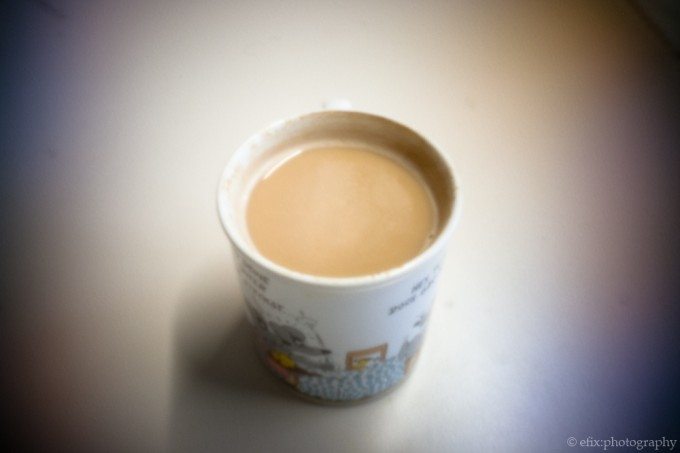
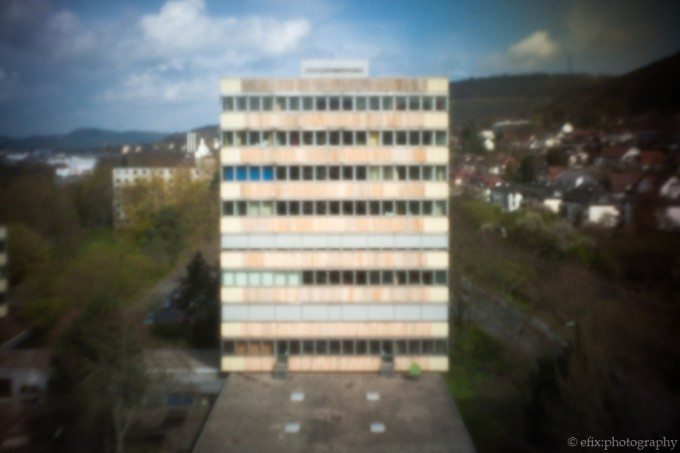


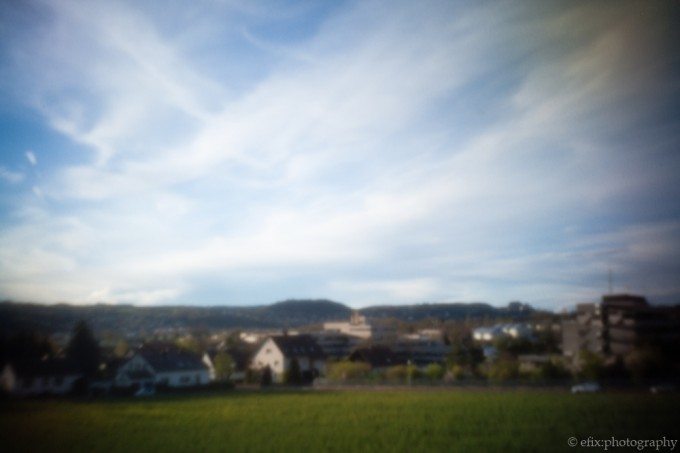
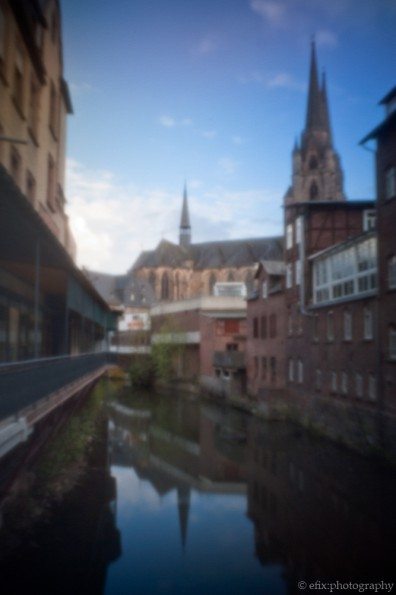
The SLR Magic Pinhole Lens is available on eBay (directly linked sentence).
Please Support The Phoblographer
We love to bring you guys the latest and greatest news and gear related stuff. However, we can’t keep doing that unless we have your continued support. If you would like to purchase any of the items mentioned, please do so by clicking our links first and then purchasing the items as we then get a small portion of the sale to help run the website.


